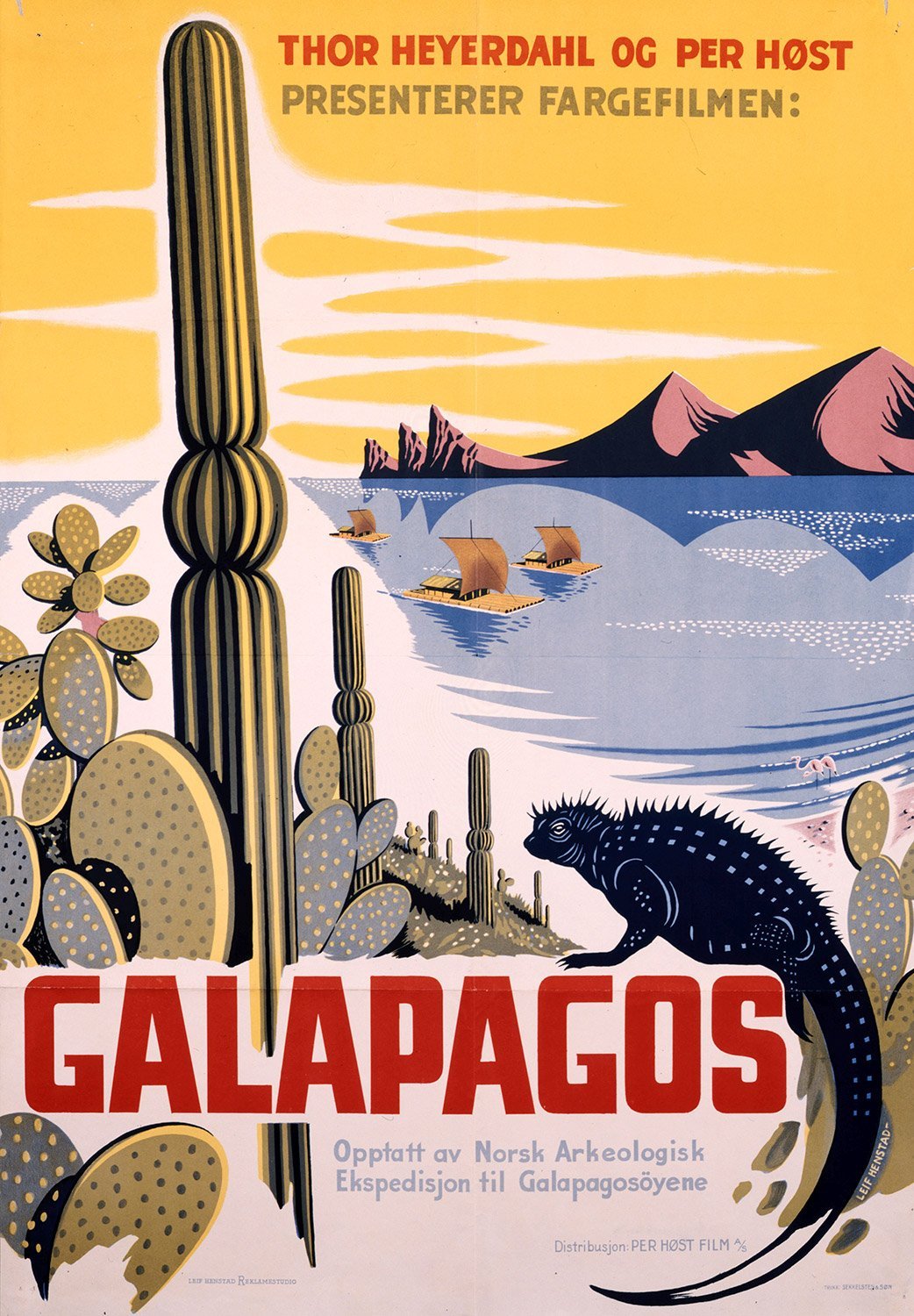Galapagos-Reevaluation of the evidence
The first archaeological work on the Galapagos Islands was done when Thor Heyerdahl financed and organized an expedition consisting of archaeologists Erik K. Reed and Arne Skjølsvold in the autumn of 1952. Heyerdahl and his colleagues claimed that people from South America had visited the Galápagos - long before Christopher Columbus reached America.
The expedition team from left: Erik Reed, Thor Heyerdahl, Arne Skjølsvold. Behind: Karl Angemeyer and Erling Graffer.
The expedition group left Guayaquil on 10 January 1953 and worked on the islands of Floreana, Santa Cruz, San Cristobal and Santiago from 19 January to 18 March. The purpose of the expedition was to search for archaeological evidence of prehistoric visits to these islands. Areas for excavation were chosen on the assumption that prehistoric visitors needed a good landing place to beach their vessel and needed access to fresh water nearby. Local fishermen were also consulted.
Five sites at Floreana, Santiago and Santa Cruz produced over 1,900 ceramic sherds and some historical artifacts such as flint and glass. The bulk of the ceramic sherds recovered were of a common, red-glazed type which is difficult to establish for any strict chronological type. Fragments of ceramic pots mainly from the north coast of Peru, but also from Ecuador, from the Chimu and Inca periods were identified.
Arne Skjølsvold plays an Inca flute found in the excavation.
Excavations underway.
The expedition concluded:
"It is therefore our belief, on the basis of archaeological material available from the Galapagos Islands at the present time, that the exceptionally rich fishing grounds surrounding the islands attracted fishermen from the mainland coast from the earliest days of deep-sea navigation off northern Peru and Ecuador.
These fishermen appear to have made occasional or perhaps even seasonal visits to the Galapagos group for centuries before the arrival of the first European visitors, and from various locations on the mainland, from coastal Ecuador to the Casma Valley area in the south of the area. North Peruvian coast" (Heyerdahl and Skjølsvold 1990:67).
The expedition team flies home.
Critics of this conclusion have made two general observations: (1) that all excavated objects were found at the same, general level, and should therefore be contemporaneous; (2) the lack of painted and ornamented jars makes it possible that these were brought to the islands by buccanairs in post-Columbian times.
Ceramic frog found
In 2005, a team from the Australian National University led by archaeologist Atholl Anderson together with archaeologists Helene Martinsson-Wallin and Paul Wallin from the Kon-Tiki Museum re-excavated the sites visited by Heyerdahl, Reed and Skjølsvold in 1953. The investigations supported the view. that all the finds came from the same stratigraphic layer. Later, analysis of the plain, reddish pottery sherds by optically stimulated luminescence dating indicated a historic age for this group of pottery.
Therefore, the researchers concluded in an article entitled "Reconsidering Precolumbian Human Colonization in the Galápagos Islands, Republic of Ecuador (Andersson et.al. 2015:169) that based on current evidence "there was no human occupation of the Galápagos Islands before the historical era" .








